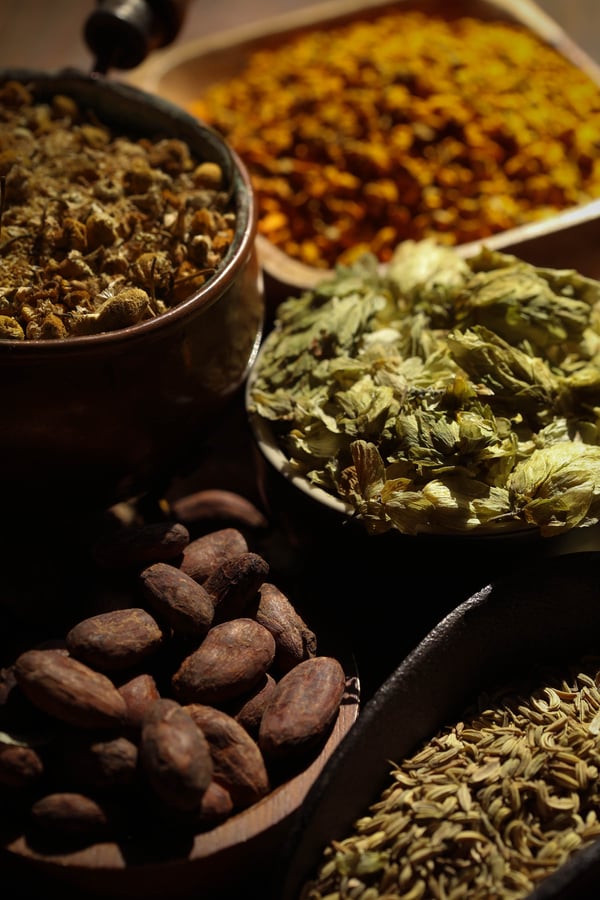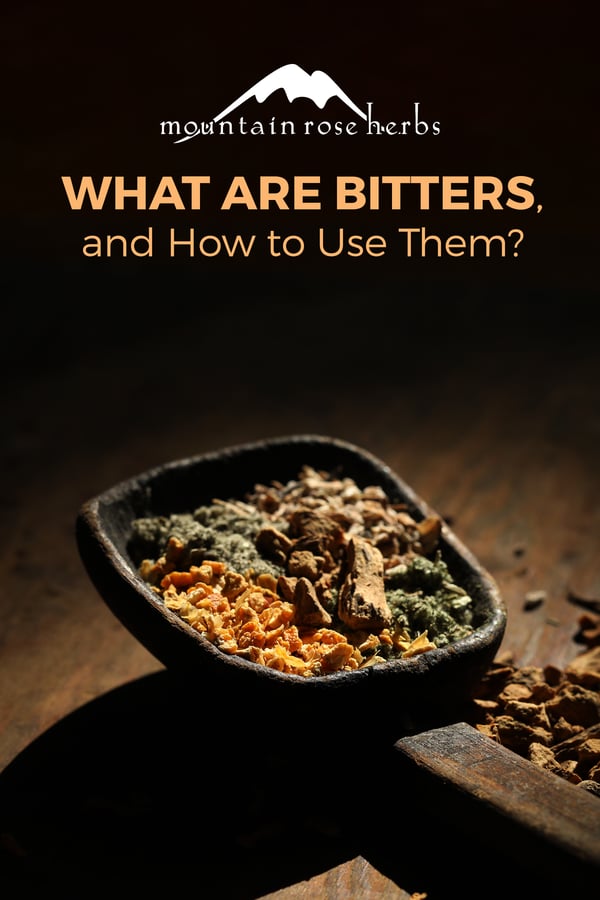I’m not ashamed to admit that I’m a full-fledged advocate of bitters. Properly introduced to me by my teacher, Howie Brounstein of Columbines School of Botanical Studies, I’ve come to appreciate the taste of bitter in my daily life and have personally experienced the wonderful effects of this unique flavor. Before herbal school, my first experience of bitters was as a cocktail ingredient. Since then, I’ve learned that this elixir, made from both bitter and aromatic botanicals, has a history dating back thousands of years of wellness-supporting use. This got me thinking, where and how did bitters originate and evolve?
Bitter flavor is thought to be an evolutionary trait of plants produced to protect themselves from insect, animal, and human consumption. Scientists hypothesize that as hominoids were evolving, so were the plants around them. Eventually humans began to consume these bitter roots and leaves as food, and then presumably discovered that they had other benefits, because the use of bitters evolved from a food source into refined tonics, digestive aids, and general wellness extracts. According to the wonderful book, DIY Bitters: Reviving the Forgotten Flavor by herbalists Guido Masé and Jovial King, the ancient king of Pontus, Mithridates, formulated the first bitters blend that was recorded in the Western world. Masé and King state that Mithridates “perfected the blend after years of study, and his purpose was to develop a universal antidote to poison, snake venom, and the bite of wild beasts”. Folklore states that Mithridates lived to an elderly age.
Many of the ancient bitter plants that were consumed by our ancestors are still incorporated into global cuisines today. This is one of my favorite ways to consume bitter flavors. By cooking with edible bitters, the flavor acts as a tonic and follows the age-old adage that food is indeed medicine. Steeping bitter herbs in wine, beer, and mead was a practice employed by both the ancient Egyptians and medieval European monks. The bitter and aromatic barks, roots, seeds, and fruits served two purposes: to boost wellness and enhance taste. As the centuries progressed, bitters formulas became increasingly refined and their uses expanded. By the 18th century, several patented bitters were available in commercial markets. A fun fact is that the term cocktail was coined during this time and consisted of four ingredients: water, alcohol, sugar, and bitters.
Bitters also have a long history of use within traditional Eastern healing systems. In Ayurveda, bitter foods and herbs are considered balancing for kapha and (in small amounts) pitta doshas and are often employed in cleansing formulas. However, Ayurvedic practitioners warn that bitter flavors can aggravate vata constitutions, causing energetic excess of cold and dryness. Similarly, in Traditional Chinese Medicine, bitters are employed for removing excess heat and dampness from the body.
Bitters work through direct contact with the bitter receptors on our tongue. They signal our body to begin the digestive process, which increases the efficiency of our GI tract and ultimately supports overall wellness. Incorporating a little bit of bitters into your daily diet goes a long way.
Bitter Herbs
- Organic Oregon grape root
- Organic orange peel
- Organic milk thistle
- Organic artichoke leaf
- Organic mugwort
- Organic dandelion root
- Organic gentian root
Aromatic Bitter Herbs
- Organic turmeric Root
- Organic fennel seed
- Organic yarrow leaf and flower
- Organic chamomile flowers
- Organic cacao
- Organic peppermint leaf
- Organic cardamom pods
- Organic coriander seed
- Organic cumin seed
- Organic ginger root
- Organic hops flowers
While bitters have continued to grow in popularity with the increasing rise of cocktail culture, they have also continued to impress the herbal community, thanks to their numerous beneficial qualities.
It can be fun to make your own bitters blends at home. Maybe you’ll start to become an advocate for bitters too. Happy tasting!
Looking for organic, ready-to-use bitters?
Learn About our Flavorful Organic Bitters
You may also enjoy:
- DIY Dandelion Orange Bitters
- 3 Seed Herbal Cordial for Digestion
- Best Herbs for Digestion and 3 Uses













